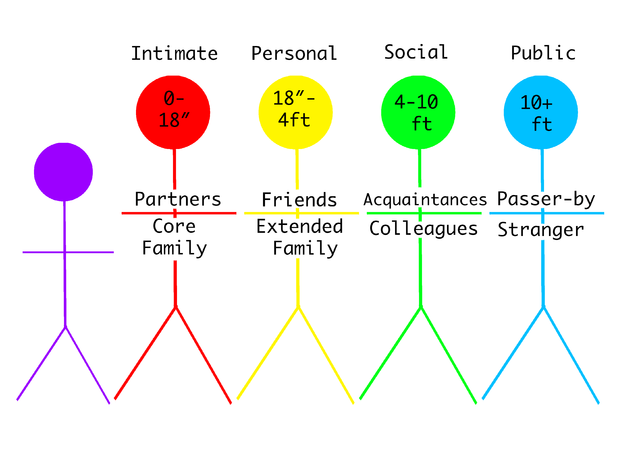3 Ways to Readjust to “Invasions of Space” in Another Culture
Regardless of where you’re from and where you’re going, just about every culture has a unique take on personal space. Some cultures can be wildly different than anything we’ve ever experienced, and other can have subtle differences that only surface covertly over time. Whether you’re moving across the world or just visiting another country for a long weekend, here are a few tips that we can all use to be more understanding, tolerant guests.

Photo via Wikimedia
1. Try to read up on what to expect spatially in the new culture
Obviously, you’ll likely be researching your destination extensively before travelling there. What language is spoken? What currency is used? How connected is the transportation network? While researching all of these important details, don’t forget to research social norms, common mannerisms when engaging in greetings and interactions, and – of course – that culture’s spatial behaviours.
Travelling soon? Need to learn a language? Take our free placement test to get started today!
For example, is it common (and socially acceptable) to touch strangers and new friends, or is that strictly reserved for family? How are newcomers greeted? Are there any other communication nuances that you should know about before you arrive? Typically, the best ways to find helpful, real-world tips are by asking travel buddies in your own network and searching personal blogs online.
2. Find your own way to exist within the new culture’s spatial framework
Though this is much easier said than done, it’s not an impossible task to accomplish over time. In the same way that practice makes perfect with language, so it does with various interactions in a new culture and society. Even if a culture appears very similar to your own at first, it may take days or even weeks to fully adjust to things as simple as how to walk down the street, how to take the metro, when to say “excuse me,” and more.

Photo via Pixabay
While some cultures encourage politeness, talking to strangers, and a hyper-awareness of one’s own space (especially as it relates to those around him or her), others feel very differently about the importance of, say, holding a door open for another person or offering a “pardon me” when bumping into someone on the street. You’ll quickly learn some of the norms, while others may only surface over time and by trial-and-error. But remember, we don’t want to learn these differences just to resist or attempt to “change” them. Rather, it’s to adjust to them and learn how to navigate the myriad interactions that humans encounter everyday just like a local would.
3. Keep in mind that another culture’s treatment of space isn’t typically right or wrong – just different
The recurring theme of travelling is (and probably always will be) that of tolerance. As outsiders, we have to remember that cultural differences are not good or bad, better or worse – they’re simply different. Maybe we’re not used to the strong-willed warmth typical of Peru, the besos greeting of Spain, the reserved nature of Scandinavia, or the bowing etiquette of Japan. But, that’s the exciting, frustrating, interesting newness of travel: We’re continuously pushed out of our comfort zones, and our reward is the privilege of experiencing a new culture.
How do you adjust to another culture’s treatment of space? Share your stories in our comments section below!
